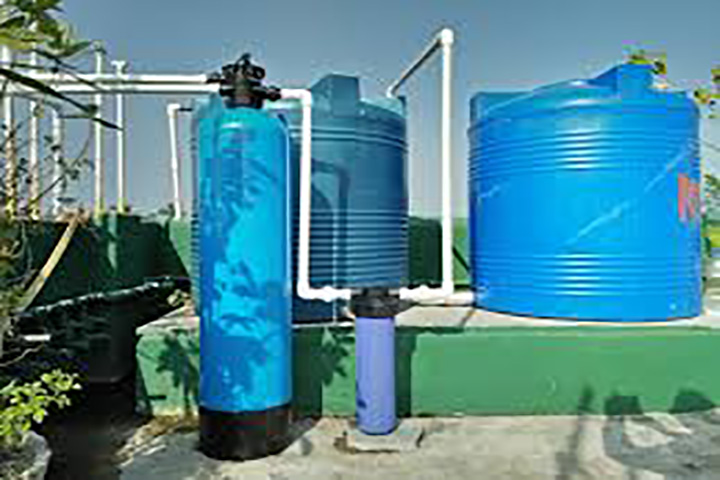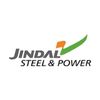Iron Removal Plant Manufacturer
Iron Removal Plant
Iron removal plants are vital water treatment systems that eliminate iron and manganese, common contaminants that can mar water quality. These plants typically employ a two-pronged approach. First, they utilize oxidation methods, such as chemical treatment with chlorine or potassium permanganate, aeration, or specialized catalytic media, to convert dissolved iron into insoluble particles.
Subsequently, these precipitated iron particles are effectively removed through filtration. The treated water then undergoes further refinement, often involving pH adjustment and disinfection, before it is deemed suitable for distribution. These plants are crucial in ensuring clean and safe drinking water by tackling problems like staining, unpleasant taste, and odour associated with high iron concentrations.
Why Opt for Hydroflux Engineering?
Select Hydroflux Engineering for your iron removal plant needs due to our deep-seated expertise in water treatment technologies. We provide customized solutions for water quality challenges effectively and efficiently.

Our Strengths:
Our commitment extends to delivering reliable performance and cost-effective solutions, ensuring long-term satisfaction.
- Expertise: Deep knowledge of advanced water treatment technologies.
- Tailored Solutions: Custom designs meeting unique client requirements precisely.
-
Reliable Technology:
Proven systems ensuring consistent and dependable operation. - Efficient Treatment: Cost-effective methods for optimal water purification results.
How Does an Iron Removal Plant Function?
An Iron Removal Plant's operational process begins with raw water laden with dissolved iron and manganese, which is then pumped into the treatment system. The initial crucial step involves oxidation. This process aims to transform the soluble iron and manganese ions into insoluble particulate forms, making their removal possible.
At this stage, various oxidation methods can be employed, including introducing chemical oxidants like chlorine or potassium permanganate or through aeration, which exposes the water to oxygen. Subsequently, the water passes through specialized filtration media, such as manganese dioxide or greensand, which traps the precipitated iron and manganese particles.
As a final step, the filtered water undergoes post-treatment procedures. These typically include pH adjustment to ensure optimal water quality and disinfection to eliminate any potential microbial contaminants before the water is deemed safe for distribution and use, effectively removing the unwanted iron and manganese.
How Can We Assist with Your Iron Removal Plant Needs?
We offer end-to-end services to address your specific iron removal plant requirements. Our process begins with a thorough evaluation, where we analyze your water quality, production demands, and relevant regulatory standards to understand your unique situation clearly.
Drawing upon this assessment, our experienced team recommends the most appropriate iron removal technologies. We carefully consider various factors, including optimal oxidation methods, suitable filtration media, necessary system capacity, and space limitations. Throughout this crucial phase, we emphasize close collaboration with you, ensuring tailored solutions and providing expert guidance every step of the way.
Our overarching commitment is to ensure that the final Iron Removal Plant design aligns with your objectives. We strive to deliver efficient and sustainable water purification solutions that meet all regulatory requirements and satisfy your specific operational demands, providing you with a reliable and effective system.
What Are the Various Technologies Employed in Iron Removal Plants?
Here are the different types of technologies utilized in iron removal plants:
- Chemical Oxidation followed by Filtration: This method involves treating water with chemical oxidizing agents like chlorine or potassium permanganate. Subsequently, the oxidized iron and manganese particles are removed through filtration media such as sand, anthracite, or activated carbon.
- Aeration followed by Filtration: This technique utilizes air to oxidize the dissolved iron and manganese in the water. The resulting precipitated particles are then effectively removed through a filtration process.
- Greensand Filtration: This process employs a filter medium known as greensand, which contains manganese dioxide. Manganese dioxide acts as a catalyst for oxidation and subsequent iron and manganese removal from the water.
- Catalytic Media Filtration: This approach utilizes specialized catalytic media, such as brim or media coated with manganese dioxide, to accelerate the oxidation process and facilitate the efficient filtration of iron and manganese contaminants.
- Biological Filtration: This technology harnesses biological processes to achieve the oxidation and removal of iron and manganese. It often involves using filtration media or biofilm reactors to support the biological activity.
- Ion Exchange: Ion Exchange: This method passes water through resin beads charged with sodium ions. The iron and manganese ions in the water are exchanged for these sodium ions, effectively removing the unwanted contaminants.
These diverse technologies provide a range of solutions for iron removal, accommodating various water quality characteristics and specific treatment needs across different applications.
Frequently Asked Questions (FAQ)
Our Clients Testimonials
Our clients consistently commend our high-quality manufacturing and the effectiveness of our wastewater treatment services, encompassing STP, ETP, WTP, Industrial RO, Softener, OWC, and more, delivering exceptional results.
Hydroflux provided an STP system for one of our large residential projects. The plant has been running smoothly, and we’re reusing treated water for landscaping and flushing. Their team did an excellent job with installation and support.

Ravi Sharma
L&T ConstructionAt our telecom office site, Hydroflux installed a compact RO + WTP system. The system is low-maintenance, efficient, and gives us good water quality. They handled the project professionally.

Rajeev Arora
Airtel Facility TeamHydroflux installed a wastewater treatment system for our manufacturing unit. The plant works as per industrial discharge norms. Their timely service and AMC support have been great.

Meenal Kapoor
Samsung ElectronicsWe required an industrial ETP with a ZLD setup. Hydroflux delivered exactly what we needed. Their design is robust and helps us recycle water back into our process lines.

Anil Deswal
Jindal Steel & PowerOur university uses Hydroflux STP to manage sewage within the campus. The treated water is used for gardening, and the plant is eco-friendly. Their technical team is cooperative and trained our staff well.

Dr. Aftab Khan
Jamia Hamdard UniversityWe used Hydroflux for WTP system installation at one of our metro depots. The water treatment system is reliable and easy to maintain. Their service team is always on time.

Sandeep Malhotra
Delhi Metro Rail Corporation (DMRC)We use Hydroflux’s STP and ZLD solution at our bottling plant. Water reuse and discharge quality have both improved. Their ZLD setup helped us clear compliance smoothly.

Vikram Joshi
Pepsi Bottling Unit (Jai Beverages)We installed a RO plant at our Sikandrabad tiles factory. The system provides consistent water quality for tile processing. Very effective and energy-efficient.

Sanjay Singh
Kajaria CeramicsHydroflux installed a compact STP system at our food production plant. Treated water is reused for utility and cleaning. The system is easy to run and completely odorless.

Poonam Verma
Haldiram’s Production UnitOur Gurgaon residential projects have Hydroflux’s STPs. They help us recycle and reuse water, which supports our green building certifications. We’re satisfied with their support even after handover.

Meena Rathi
Raheja DevelopersHydroflux delivered a 690 KLD STP plant for our township. The plant runs automatically and treats large volumes efficiently. It’s been a valuable addition to our sustainability goals.

Ritesh Goyal
Omaxe LtdWe installed an STP from Hydroflux for our resort. Water from bathrooms and kitchen is now treated and reused in our gardens. The plant is silent and blends into our eco-friendly theme.

Arjun Mehta
Best Western ResortHydroflux installed a small but high-efficiency ETP at our Manesar unit. We’ve had no major issues and water discharge is always within limit. Their service is quick and professional.

Priti Sharma
Donaldson India Filter SystemsWe’re using Hydroflux’s STP in our hotel’s backend operations. The system helps us recycle greywater for flushing. Their setup is clean, quiet, and very effective.

Ramesh Yadav
Radisson HotelsHydroflux supplied a robust ETP system for our Bokaro cement plant. It handles high loads and treats effluent effectively. We’ve seen a clear improvement in compliance and water reuse.

Alok Sharma
Dalmia Bharat CementWe installed a compact RO + WTP setup at our Manesar unit through Hydroflux. It runs quietly and requires very little manual handling. The system is reliable and consistent in water output.

Tanya Mehra
BRADY Company India Pvt LtdHydroflux provided an automated ETP solution at our Vapi facility. The system helps us recycle water and control our wastewater discharge. Their service support is excellent even post-installation.

Ritu Jain
HAVELLS IndiaAt our printing unit, Hydroflux installed a RO plant to ensure water quality for ink processing. The plant has reduced scale issues and improved equipment life. It was a great decision to go with them.

Saurabh Chawla
Dainik BhaskarHydroflux provided an MBR-based STP for our Gurgaon campus. The treated water is clear and odorless, perfect for reuse. We are happy with their engineering and service quality.


